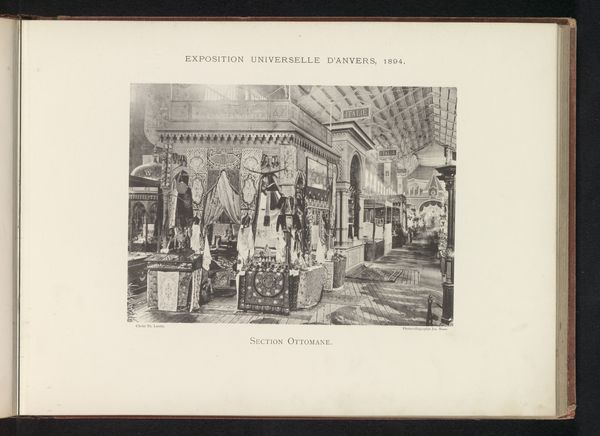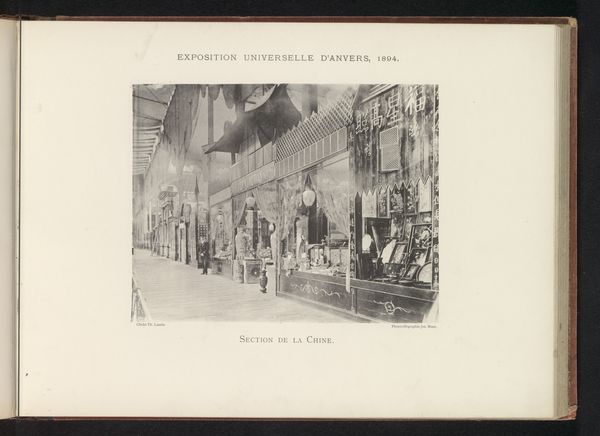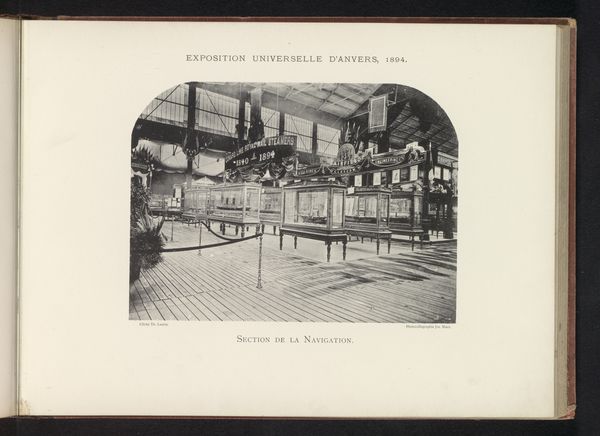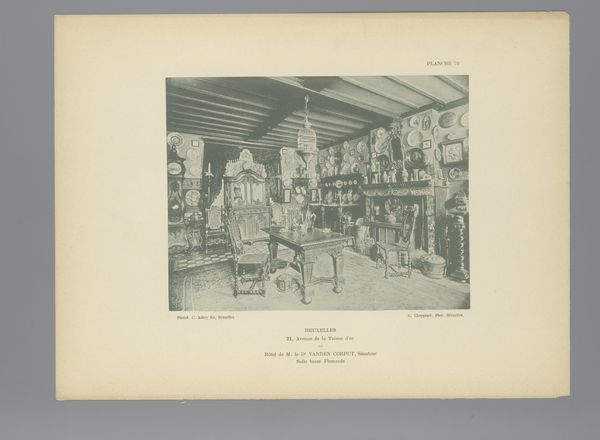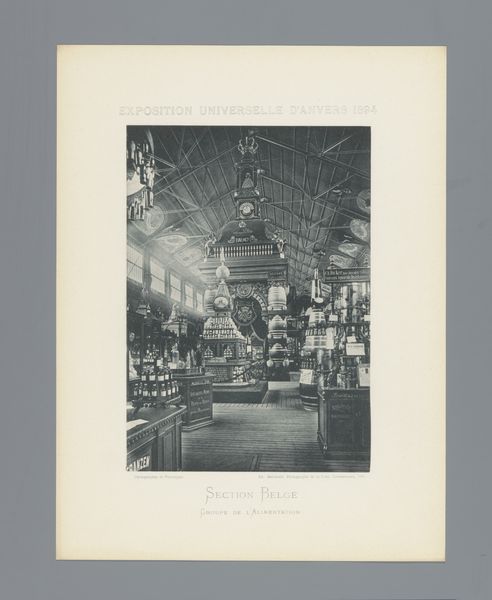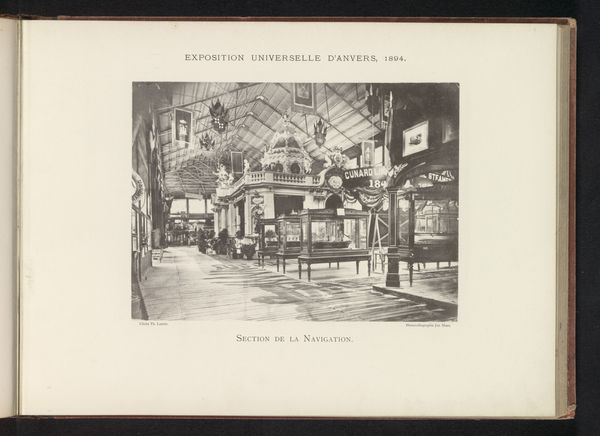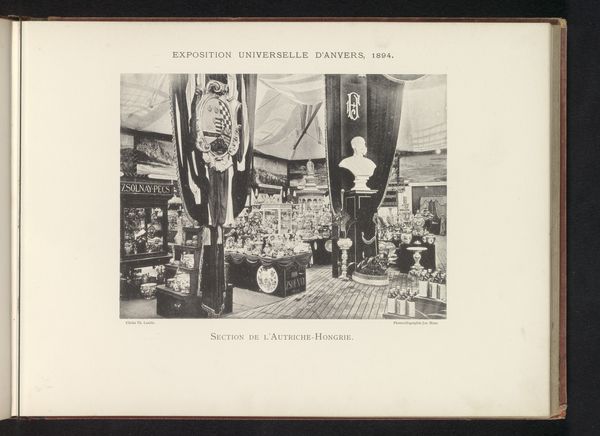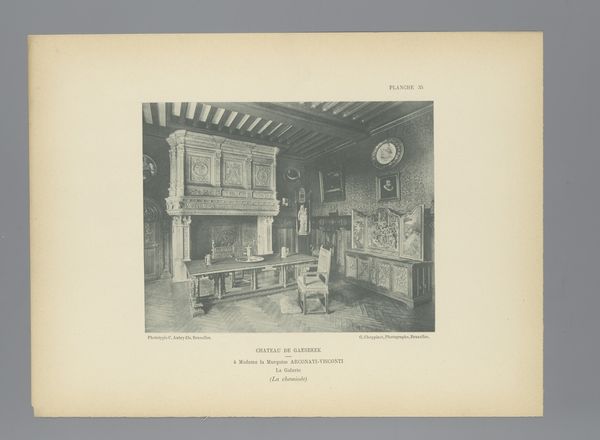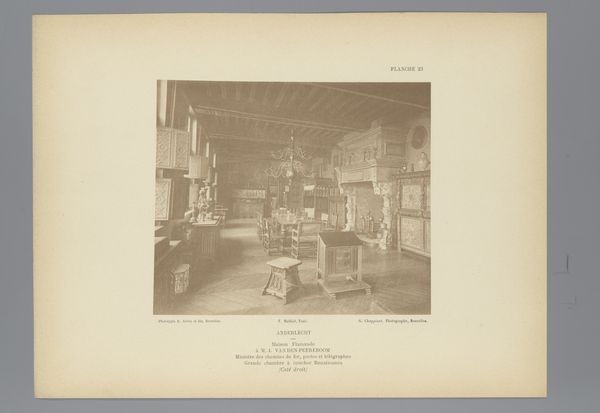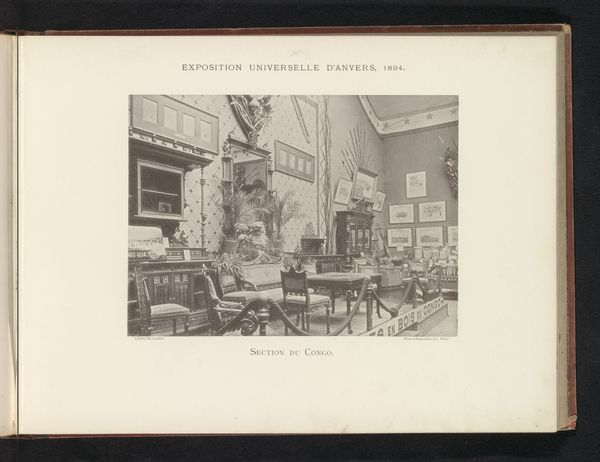
Expositie van Liebig Vleesextracten tijdens de wereldtentoonstelling te Antwerpen 1894
0:00
0:00
mixed-media, print, photography, engraving
#
mixed-media
# print
#
landscape
#
photography
#
genre-painting
#
engraving
#
realism
Dimensions: height 144 mm, width 204 mm
Copyright: Rijks Museum: Open Domain
Editor: So, this photogravure depicts the Liebig Meat Extract exhibit at the Antwerp World Fair in 1894, created by Th. Lantin. I’m struck by the density of objects; it feels like a celebration of production itself. What captures your attention in this piece? Curator: The sheer abundance speaks volumes. It isn't just displaying the product; it's showcasing the process. Consider the world's fairs, designed to celebrate industrial advances and global trade. Liebig, using photography and printmaking, immortalizes this display. The construction of the booth itself—what materials were used? Who assembled it? That tells us about the labor involved, and the social hierarchy implied by who is exhibiting and who is working. Editor: That makes sense. It's easy to focus on the final product, the meat extract, but overlooking the complex systems that make it possible. Do you think the artist consciously considered these implications? Curator: Whether Lantin deliberately critiqued the system is secondary. As a materialist, I see this as a document revealing inherent relationships. The exhibit aestheticizes industrial labor. Consider the juxtaposition: ornate presentation, mass-produced goods. This clash reveals a society grappling with the implications of mass production and global capitalism. The value isn’t only in what the image represents, but in what its existence—its creation and its survival—tells us about its moment in time. Editor: I see what you mean. The engraving, a mechanically reproducible medium, mirrors Liebig's mass-produced meat extract. I now view the entire exhibit differently, focusing on how goods go from materials to markets. Thank you! Curator: Indeed. By focusing on material conditions, the seemingly simple image becomes a rich resource to trace cultural meaning. It invites us to contemplate consumerism, advertising, and labor dynamics—even today.
Comments
No comments
Be the first to comment and join the conversation on the ultimate creative platform.

